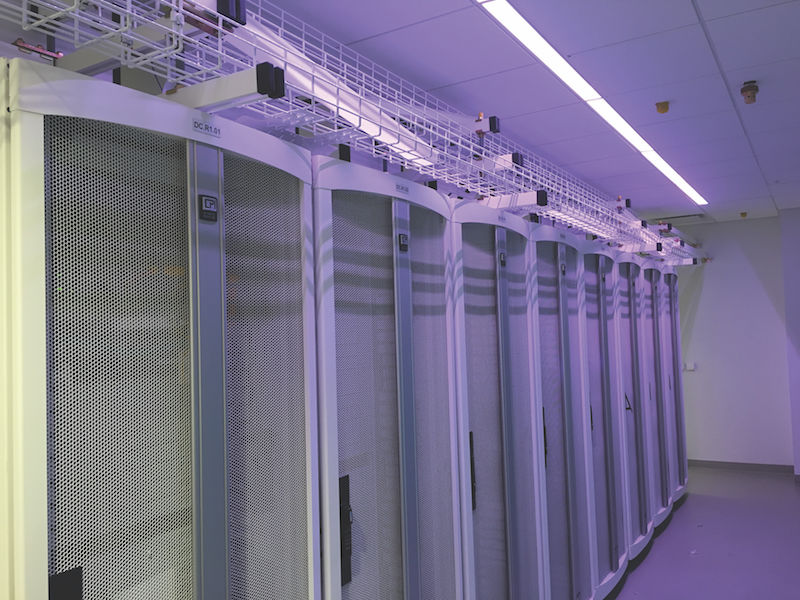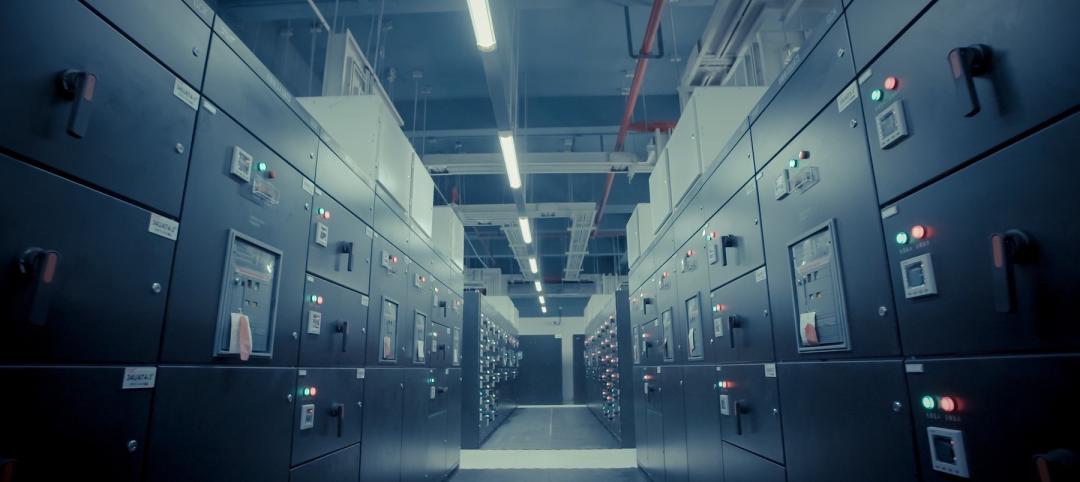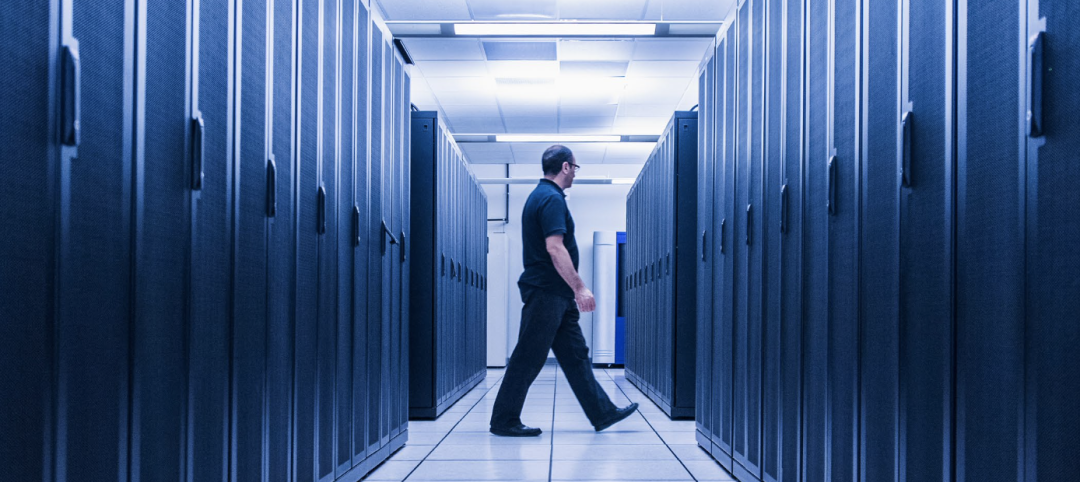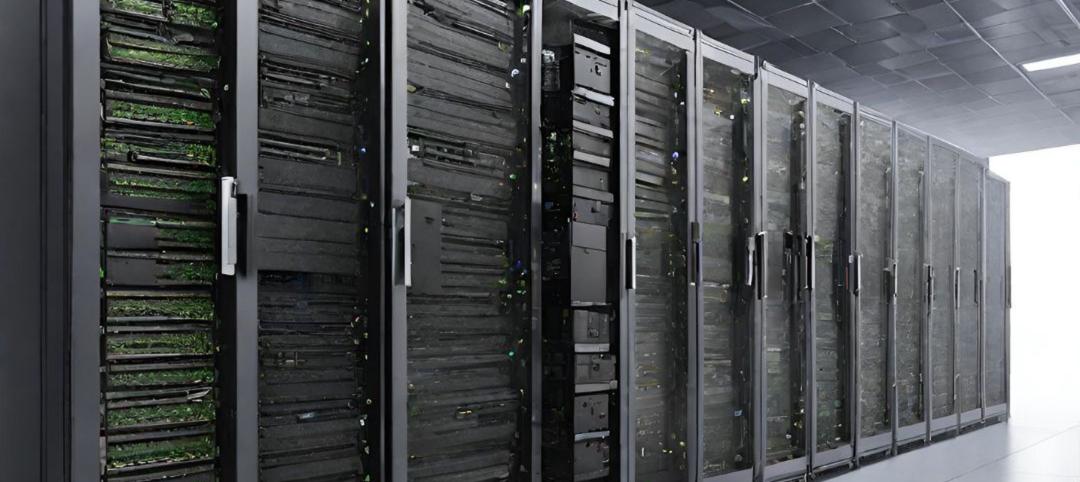As more companies move their data processing and computing to the cloud or co-location centers, some still want to maintain IT centers that are main distribution facilities (MDFs), “points of presence for their IT departments,” says Robert Sty, SmithGroup JJR’s Mission Critical Studio Leader.
Over the past two years, SmithGroup has been getting more requests from clients for micro data centers that provide that presence. One such facility is a 2,500-sf data center inside a two-story, 60,000-sf commercial office building in the Phoenix area, whose construction was completed last May.
Sty requested that the names of the client, the general contractor, and the designer of the building be withheld. But he did confess that this data center was “kind of an afterthought,” as it was being planned while the building was under construction.
The micro data center holds 32 server cabinets, supporting mechanical and electrical equipment (N+1 configuration), a shipping/receiving area, and an IT lab for build/burn-in testing for servers.
“It was like putting 10 pounds in a five-pound bag,” he says. To make this work, SmithGroup JJR raised the cabinet density to 7kW per unit. “But that created a heat load,” says Sty, which would be problematic if the cooling system went down.
The solution was to install a battery-powered flywheel backup uninterruptible power supply (UPS) onto the computer room air conditioner so the fans would keep circulating air during a power failure.
SmithGroup also deployed hot-aisle containment, a method of cooling that uses a physical barrier to guide hot exhaust airflow from server racks back to the AC return. It cools the front and back of the aisles, and mwwaintains an average room temperature of 70-75ºF.
Sty says that any client whose IT group asks for a micro data center that never goes down needs to appreciate that offices and other nonresidential spaces don’t always have the necessary infrastructure, such as a second utility feed or centralized cooling plant. Floors under data centers need to be able to handle at least 150 pounds per sf, compared to the 50-100 psf that offices are built to support. (The Phoenix office was designed to carry the heavier load.)
Data centers, regardless of size, take up more space than most clients realize. “We had to get real tight” with the mechanical and electrical equipment to keep it off of the data center floor, says Sty.
So far, the client’s feedback has been positive. Phoenix had an unusually hot summer, with outdoor temperatures rising as high as 117ºF. But the data center “has been holding the temperature to where it’s easy enough to work around,” says Sty. And the clearances proved to be satisfactory, even with larger cabinets.
Related Stories
Data Centers | Oct 1, 2024
10 biggest impacts to the data center market in 2024–2025
While AI sends the data center market into the stratosphere, the sector’s accelerated growth remains impacted by speed-to-market demands, supply chain issues, and design innovation necessities.
Data Centers | Sep 2, 2024
Data center demand continues its feverish growth rate
But JLL’s latest market report worries that the sector is outpacing its manpower and electricity capacities.
Multifamily Housing | Aug 21, 2024
Nation's leading multifamily developer expands into infrastructure
Greystar's strategy for infrastructure is driven by the shifting landscape of today's cities—primarily in the increased digitization, urbanization, and transitions to clean energy.
Data Centers | Aug 8, 2024
Global edge data center market to cross $300 billion by 2026, says JLL
Technological megatrends, including IoT and generative AI, will require computing power to be closer to data generation and consumption, fueling growth of edge IT infrastructure, according to a new JLL report.
Construction Costs | Jul 18, 2024
Data center construction costs for 2024
Gordian’s data features more than 100 building models, including computer data centers. These localized models allow architects, engineers, and other preconstruction professionals to quickly and accurately create conceptual estimates for future builds. This table shows a five-year view of costs per square foot for one-story computer data centers.
Data Centers | Feb 28, 2024
What’s next for data center design in 2024
Nuclear power, direct-to-chip liquid cooling, and data centers as learning destinations are among the emerging design trends in the data center sector, according to Scott Hays, Sector Leader, Sustainable Design, with HED.
Data Centers | Feb 1, 2024
Gen AI will drive data center growth, says latest JLL sector report
Power access is pushing developers toward alternative sources and secondary markets.
Data Centers | Nov 22, 2023
How is artificial intelligence impacting data center design?
As AI is reshaping how we interact with machines and the world around us, the design of data centers needs to adapt to this fast-changing landscape. So, Page pairs expert thinking with high-performing solutions to meet the needs of rapidly advancing technologies.
Data Centers | Nov 13, 2023
Data center sector trends for 2023-2024
Demand for more data centers is soaring, but delivery can be stymied by supply delays, manpower shortages, and NIMBYism.
Giants 400 | Oct 2, 2023
Top 50 Data Center Construction Firms for 2023
Turner Construction, Holder Construction, HITT Contracting, DPR Construction, and Fortis Construction top BD+C's ranking of the nation's largest data center sector contractors and construction management firms for 2023, as reported in Building Design+Construction's 2023 Giants 400 Report.

















